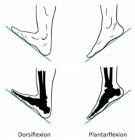Abstract
Research Article
Development of Latent Fingerprints Using Food Coloring Agents
Kallu Venkatesh, Atul Kumar Dubey and Bhawna Sharma
Published: 10 December, 2024 | Volume 8 - Issue 1 | Pages: 104-107
Aim and objective: The current study aims to explore the effectiveness of food dyes as potential agents for the formation of latent fingerprints on non-porous substrates.
Introduction: The development of fingerprints is a long-established forensic technique crucial for identifying perpetrators. Traditional methods often use various powders to reveal latent fingerprints on different surfaces, but these methods can be costly and pose health risks when exposed to humans. Consequently, there is an increasing demand for alternative techniques that are cost-effective while still providing high-resolution fingerprint visibility.
Materials and methods: In this study, Colormist Super whip food powder red, blue, orange, turquoise, and pink was used for the Development of Latent fingerprints on different non-porous surfaces (CD, Mobile screen, Glass bottle, Mirror, Steel bottle).
Results: The ColorMist Super Whip edible powders proved successful in developing high-quality finger marks with visible level 1 and level 2 fingerprint details across all substrates, showcasing its effectiveness in latent fingerprint enhancement.
Conclusion: Food dyes provide a simple, cost-effective, and eco-friendly method for developing latent fingerprints on nonporous surfaces. Red and black dyes consistently deliver clear ridge detail, while turquoise performs well on glass. Surface type plays a crucial role in dye effectiveness; making food dyes a practical, non-invasive alternative for on-site forensic use.
Read Full Article HTML DOI: 10.29328/journal.jfsr.1001070 Cite this Article Read Full Article PDF
Keywords:
Latent fingerprints; Forensic investigation; Food colorants; Evidence
References
- Adhithya R, Suneetha V. A latent fingerprinting technique using turmeric, chili, pepper, and coal in forensic detection. Scholars Research Library, Der Pharmacia Lettre. 2015;7(5):325-332. Available from: https://www.scholarsresearchlibrary.com/articles/a-latent-finger-printing-technique-by-using-turmeric-chilli-pepper-and-coal-inforensic-detection.pdf
- Badiye A, Kapoor N. Efficacy of robin powder blue for latent fingerprint development on various surfaces. Egyptian J Forensic Sci. 2015;5(4):166-173. Available from: https://doi.org/10.1016/j.ejfs.2015.01.001
- Chen H, Ma RL, Chen Y, Fan LJ. Fluorescence development of latent fingerprint with conjugated polymer nanoparticles in aqueous colloidal solution. ACS Appl Mater. 2017;9(5):4908-4915. Available from: https://doi.org/10.1021/acsami.6b15951
- Chen CC, Yu YC, Lee HC, Giamg YS, Wang SM. Latent fingerprint development on thermal paper using traditional ninhydrin and 1,2-indanedione. J Forensic Sci. 2016;61(1):219-225. Available from: https://doi.org/10.1111/1556-4029.12897
- Garg RK. Latent fingerprints in forensic science. In: Veeraraghavan V, editor. Handbook of forensic science. New Delhi: Selective and Books Publishers. 2004;77-85. Available from: http://dx.doi.org/10.37506/mlu.v23i5.3460
- Prasad S, Soman S, Christal G. Development of latent fingerprints using non-conventional powder methods. J Forensic Med Toxicol. 2024;41(1):73-77. Available from: https://doi.org/10.48165/jfmt.2024.41.1.14
- Vadivel R, Nirmala M, Anbukumaran K. Commonly available, everyday materials as non-conventional powders for the visualization of latent fingerprints. Forensic Chem. 2021;24:100339. Available from: https://doi.org/10.1016/j.forc.2021.100339
- Garg RK, Kumari H, Kaur R. A new technique for visualization of latent fingerprints on various surfaces using powder from turmeric: A rhizomatous herbaceous plant (Curcuma longa). Egypt J Forensic Sci. 2011;1(1):53-57. Available from: https://doi.org/10.1016/j.ejfs.2011.04.011
- Nguyen T. Beetroot powder: An effective and non-toxic alternative for latent fingerprint development. Forensic Chem. 2018;10:55-61.
- Putra SL, Coumbaros J. Recovery of fresh latent fingerprints on black clothing fabrics using lumicyano. Materials Sci. 2018. Available from: http://dx.doi.org/10.13140/RG.2.2.30811.28968
- Kumar A, Sekhar A, George JK, Pillai PR, Bai SS, Sudeesh S, Chakraborty P. Development of latent fingerprints using indigenous unconventional methods. Int J Med Justice. 2023;1(1). Available from: http://dx.doi.org/10.5281/zenodo.10391703
- Bumbrah GS, Sharma RM, Jasuja OP. Emerging latent fingerprint technologies: a review. Res Rep Forensic Med Sci. 2016;6:39-50. Available from: https://doi.org/10.2147/RRFMS.S94192
- Win KN, Li K, Chen J, Viger PF, Li K. Fingerprint classification and identification algorithms for criminal investigation: A survey. Future Gener Comput Syst. 2020;110:758-771. Available from: https://doi.org/10.1016/j.future.2019.10.019
- Sears VG, Bleay SM, Bandey HL, Bowman VJ. A methodology for finger mark research. Sci Justice. 2012;52(3):145-160. Available from: https://doi.org/10.1016/j.scijus.2011.10.006
- Jasuja OP, Toofany MA, Singh G, Sodhi GS. Dynamics of latent fingerprints: The effect of physical factors on quality of ninhydrin developed prints—A preliminary study. Sci Justice. 2009;49(1):8-11. Available from: https://doi.org/10.1016/j.scijus.2008.08.001
- Mandhri AA, Khanmy-Vital A. Detection of fingerprints on paper with 2-isonoyl-ninhydrin. In: Proceedings of the 17th Meeting of the International Association of Forensic Sciences; 2005; Hong Kong.
Figures:

Figure 1
Similar Articles
-
Implications of entomological evidence during the investigation of five cases of violent death in Southern BrazilPatrícia J Thyssen*,Marina FK Aquino,Natane CS Purgato,Edmilson Martins,Alexandre A Cost,Carolina GP Lima,Claudemir R Dias. Implications of entomological evidence during the investigation of five cases of violent death in Southern Brazil. . 2018 doi: 10.29328/journal.jfsr.1001013; 2: 001-008
-
Correlate alcohol and toxicology analysis with Urinary Bladder Distension on Post-mortem Computed Tomography (PMCT): A Validation StudyLai Poh Soon*,Mohamad Helmee Mohamad Noor,Nor Fadhilah Madon,Mohd Hilmi Saidin,Mansharan Kaur Chainche,Singh,Kunasilan Subramaniam. Correlate alcohol and toxicology analysis with Urinary Bladder Distension on Post-mortem Computed Tomography (PMCT): A Validation Study. . 2018 doi: 10.29328/journal.jfsr.1001014; 2: 009-015
-
Awareness level on the role of forensic DNA database in criminal investigation in Nigeria: A case study of Benin cityNwawuba Stanley Udogadi*,Akpata Chinyere Blessing Nkiruka . Awareness level on the role of forensic DNA database in criminal investigation in Nigeria: A case study of Benin city. . 2020 doi: 10.29328/journal.jfsr.1001019; 4: 007-014
-
Forensic analysis of private browsing mechanisms: Tracing internet activitiesHasan Fayyad-Kazan*,Sondos Kassem-Moussa,Hussin J Hejase,Ale J Hejase. Forensic analysis of private browsing mechanisms: Tracing internet activities. . 2021 doi: 10.29328/journal.jfsr.1001022; 5: 012-019
-
Economic disparities and suicides: The dynamic panel data analyses of 50 states in the United StatesBruce Q Swan*. Economic disparities and suicides: The dynamic panel data analyses of 50 states in the United States. . 2021 doi: 10.29328/journal.jfsr.1001023; 5: 020-029
-
Awareness level on the relevance of forensics in criminal investigation in NigeriaOmorogbe Owen Stephen,Orhue Osazee Kelvin,Ehikhamenor Edeaghe,Nwawuba Stanley Udogadi*. Awareness level on the relevance of forensics in criminal investigation in Nigeria. . 2021 doi: 10.29328/journal.jfsr.1001028; 5: 053-057
-
Extraction of DNA from face mask recovered from a kidnapping sceneBassey Nsor*,Inuwa HM. Extraction of DNA from face mask recovered from a kidnapping scene. . 2022 doi: 10.29328/journal.jfsr.1001029; 6: 001-005
-
Unconventional powder method is a useful technique to determine the latent fingerprint impressionsHarshita Niranjan,Shweta Rai,Kapil Raikwar,Chanchal Kamle,Rakesh Mia*. Unconventional powder method is a useful technique to determine the latent fingerprint impressions. . 2022 doi: 10.29328/journal.jfsr.1001035; 6: 045-048
-
Alcohol drinking and driving habit particularly in Nigeria and the role forensic science could playMaurice E Nwakobi*. Alcohol drinking and driving habit particularly in Nigeria and the role forensic science could play. . 2022 doi: 10.29328/journal.jfsr.1001038; 6: 068-076
-
Comparative analysis of mobile forensic proprietary tools: an application in forensic investigationParth Chauhan*,Tamanna Jaitly,Animesh Kumar Agrawal. Comparative analysis of mobile forensic proprietary tools: an application in forensic investigation. . 2022 doi: 10.29328/journal.jfsr.1001039; 6: 077-082
Recently Viewed
-
Cystoid Macular Oedema Secondary to Bimatoprost in a Patient with Primary Open Angle GlaucomaKonstantinos Kyratzoglou*,Katie Morton. Cystoid Macular Oedema Secondary to Bimatoprost in a Patient with Primary Open Angle Glaucoma. Int J Clin Exp Ophthalmol. 2025: doi: 10.29328/journal.ijceo.1001059; 9: 001-003
-
Sex after Neurosurgery–Limitations, Recommendations, and the Impact on Patient’s Well-beingMor Levi Rivka*, Csaba L Dégi. Sex after Neurosurgery–Limitations, Recommendations, and the Impact on Patient’s Well-being. J Neurosci Neurol Disord. 2024: doi: 10.29328/journal.jnnd.1001099; 8: 064-068
-
Physiotherapy Undergraduate Students’ Perception About Clinical Education; A Qualitative StudyPravakar Timalsina*,Bimika Khadgi. Physiotherapy Undergraduate Students’ Perception About Clinical Education; A Qualitative Study. J Nov Physiother Rehabil. 2024: doi: 10.29328/journal.jnpr.1001063; 8: 043-052
-
Clinical Significance of Anterograde Angiography for Preoperative Evaluation in Patients with Varicose VeinsYi Liu,Dong Liu#,Junchen Li#,Tianqing Yao,Yincheng Ran,Ke Tian,Haonan Zhou,Lei Zhou,Zhumin Cao*,Kai Deng*. Clinical Significance of Anterograde Angiography for Preoperative Evaluation in Patients with Varicose Veins. J Radiol Oncol. 2025: doi: 10.29328/journal.jro.1001073; 9: 001-006
-
Regional Anesthesia Challenges in a Pregnant Patient with VACTERL Association: A Case ReportUzma Khanam*,Abid,Bhagyashri V Kumbar. Regional Anesthesia Challenges in a Pregnant Patient with VACTERL Association: A Case Report. Int J Clin Anesth Res. 2025: doi: 10.29328/journal.ijcar.1001027; 9: 010-012
Most Viewed
-
Evaluation of Biostimulants Based on Recovered Protein Hydrolysates from Animal By-products as Plant Growth EnhancersH Pérez-Aguilar*, M Lacruz-Asaro, F Arán-Ais. Evaluation of Biostimulants Based on Recovered Protein Hydrolysates from Animal By-products as Plant Growth Enhancers. J Plant Sci Phytopathol. 2023 doi: 10.29328/journal.jpsp.1001104; 7: 042-047
-
Sinonasal Myxoma Extending into the Orbit in a 4-Year Old: A Case PresentationJulian A Purrinos*, Ramzi Younis. Sinonasal Myxoma Extending into the Orbit in a 4-Year Old: A Case Presentation. Arch Case Rep. 2024 doi: 10.29328/journal.acr.1001099; 8: 075-077
-
Feasibility study of magnetic sensing for detecting single-neuron action potentialsDenis Tonini,Kai Wu,Renata Saha,Jian-Ping Wang*. Feasibility study of magnetic sensing for detecting single-neuron action potentials. Ann Biomed Sci Eng. 2022 doi: 10.29328/journal.abse.1001018; 6: 019-029
-
Pediatric Dysgerminoma: Unveiling a Rare Ovarian TumorFaten Limaiem*, Khalil Saffar, Ahmed Halouani. Pediatric Dysgerminoma: Unveiling a Rare Ovarian Tumor. Arch Case Rep. 2024 doi: 10.29328/journal.acr.1001087; 8: 010-013
-
Physical activity can change the physiological and psychological circumstances during COVID-19 pandemic: A narrative reviewKhashayar Maroufi*. Physical activity can change the physiological and psychological circumstances during COVID-19 pandemic: A narrative review. J Sports Med Ther. 2021 doi: 10.29328/journal.jsmt.1001051; 6: 001-007

HSPI: We're glad you're here. Please click "create a new Query" if you are a new visitor to our website and need further information from us.
If you are already a member of our network and need to keep track of any developments regarding a question you have already submitted, click "take me to my Query."

















































































































































